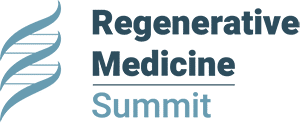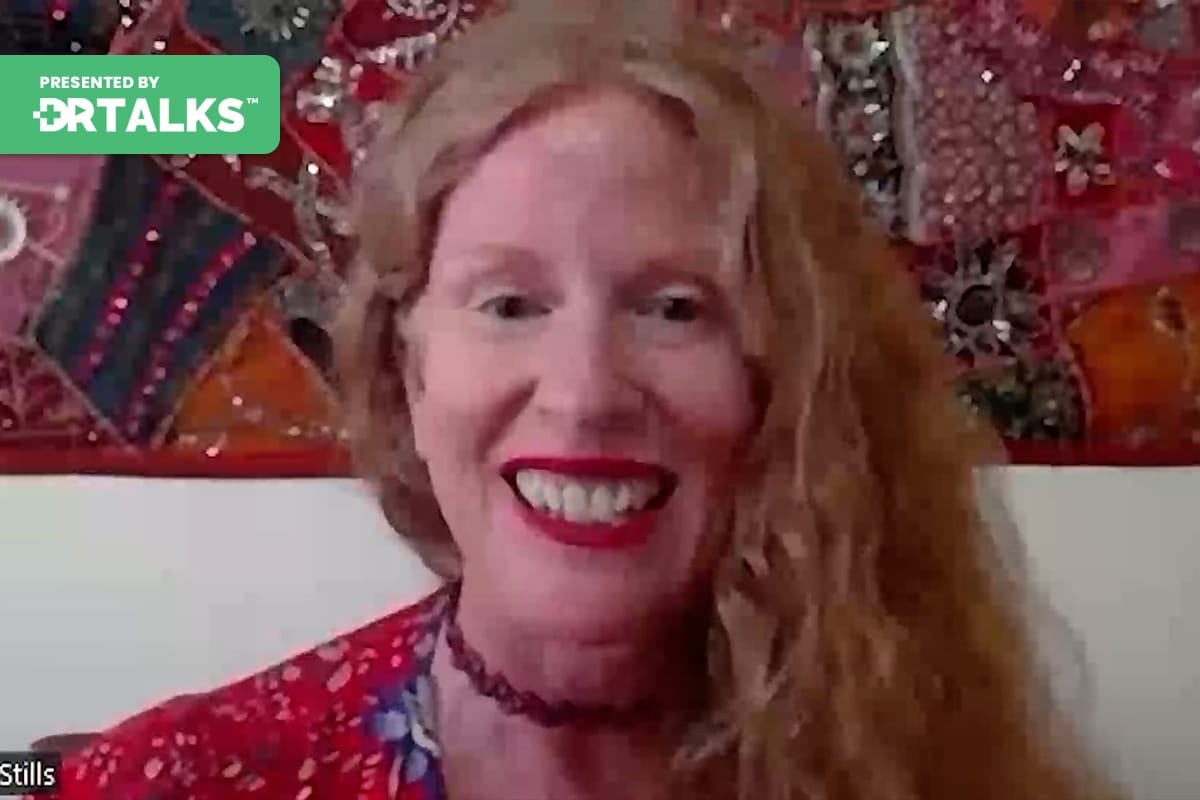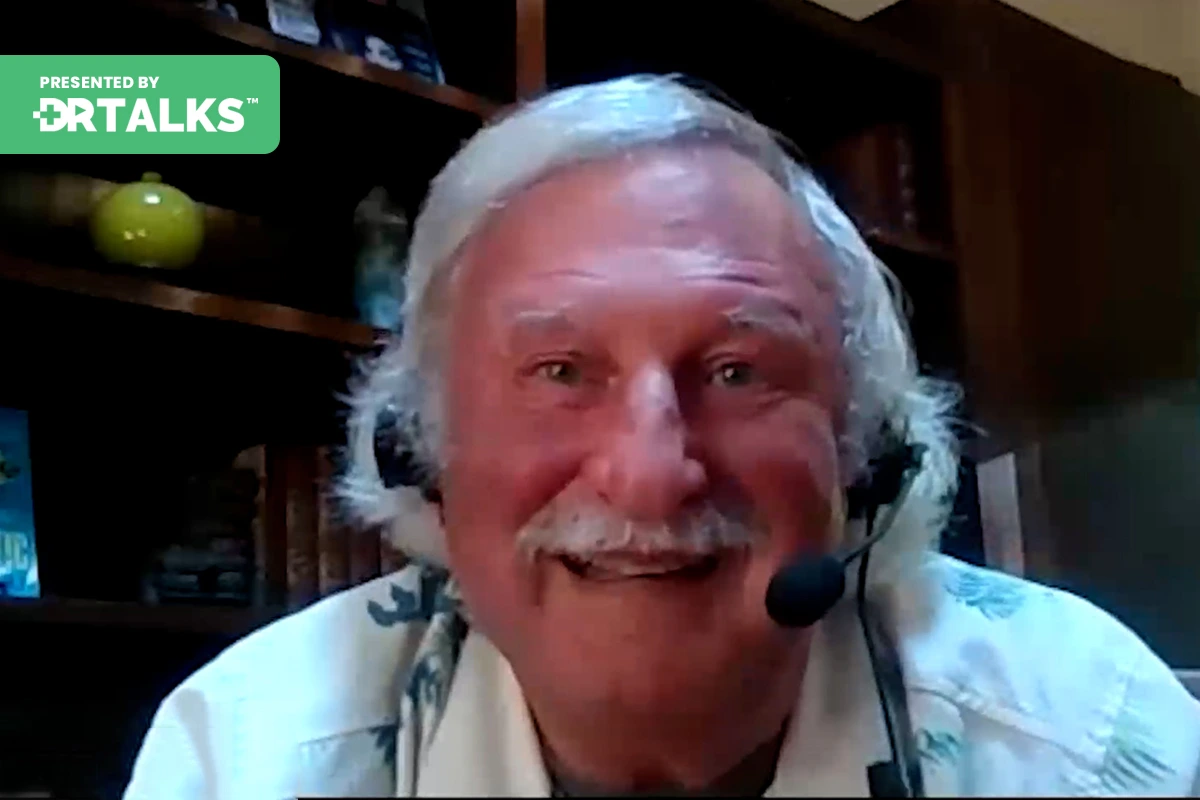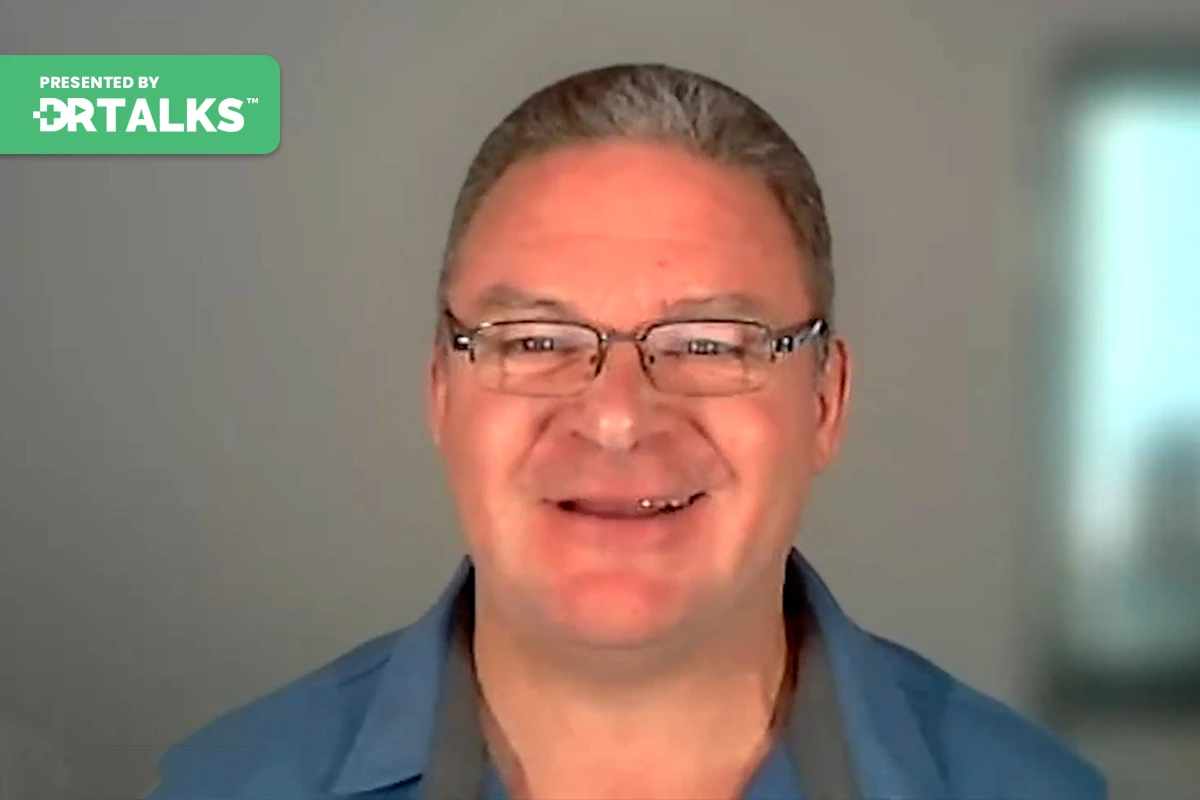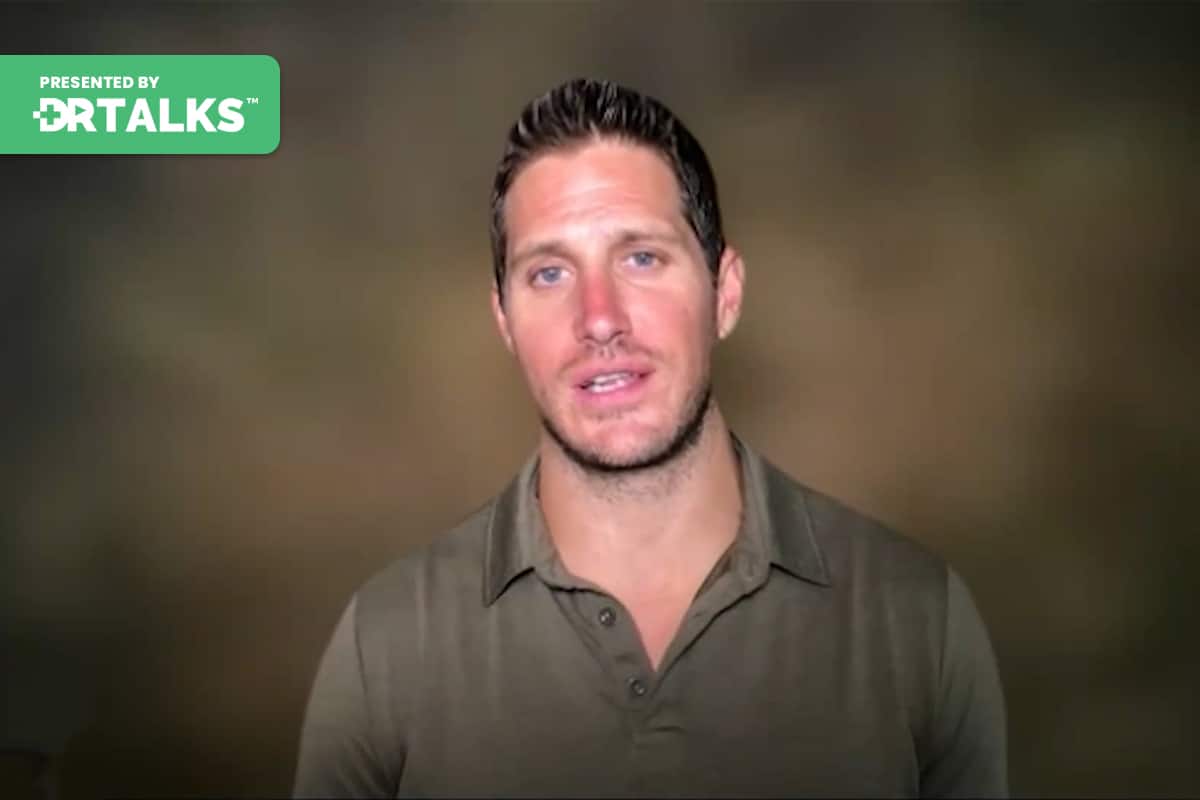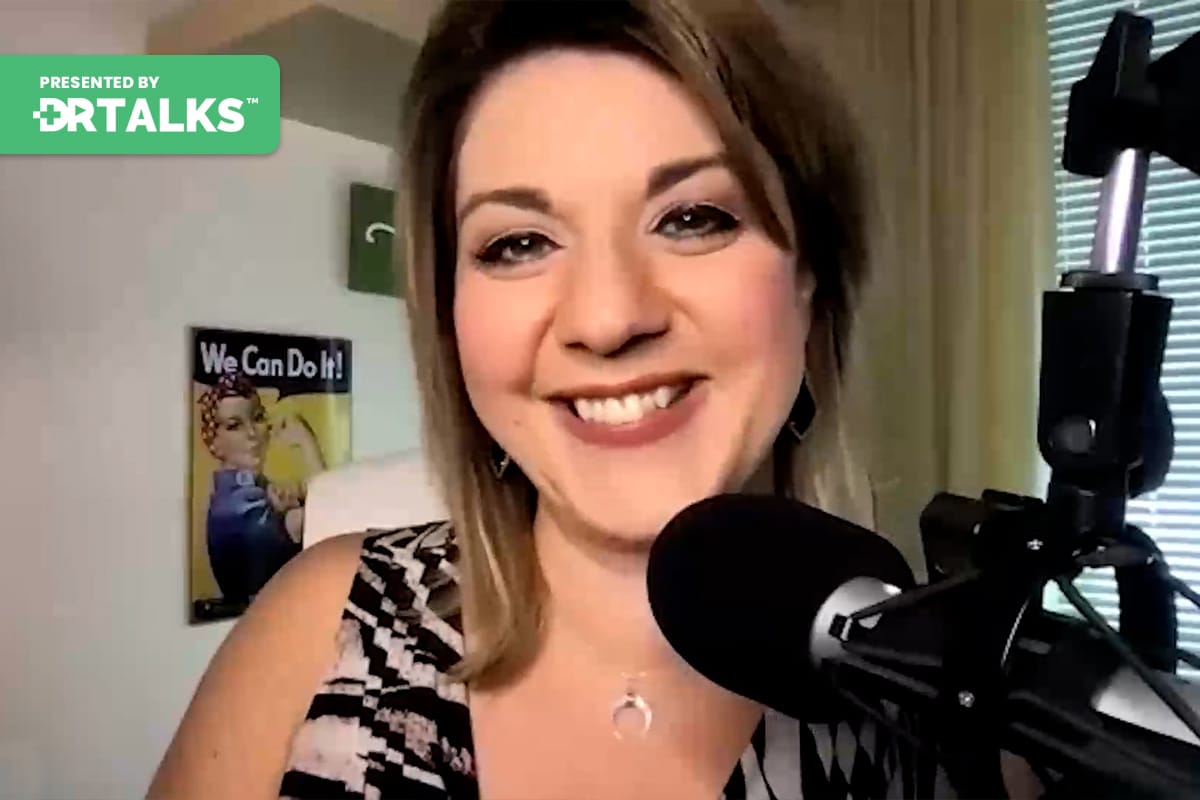Join the discussion below
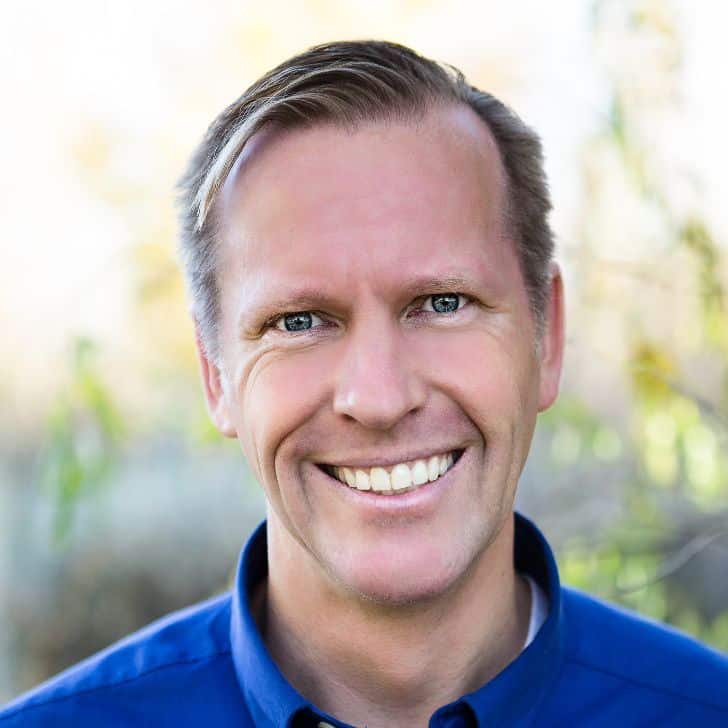
Michael Karlfeldt, ND, PhD, is a Board Certified Naturopath (CTN® ) with expertise in IV Therapy, Applied Psycho Neurobiology, Oxidative Medicine, Naturopathic Oncology, Neural Therapy, Sports Performance, Energy Medicine, Natural Medicine, Nutritional Therapies, Aromatherapy, Auriculotherapy, Reflexology, Autonomic Response Testing (ART) and Anti-Aging Medicine. Dr. Michael Karlfeldt is the host of... Read More
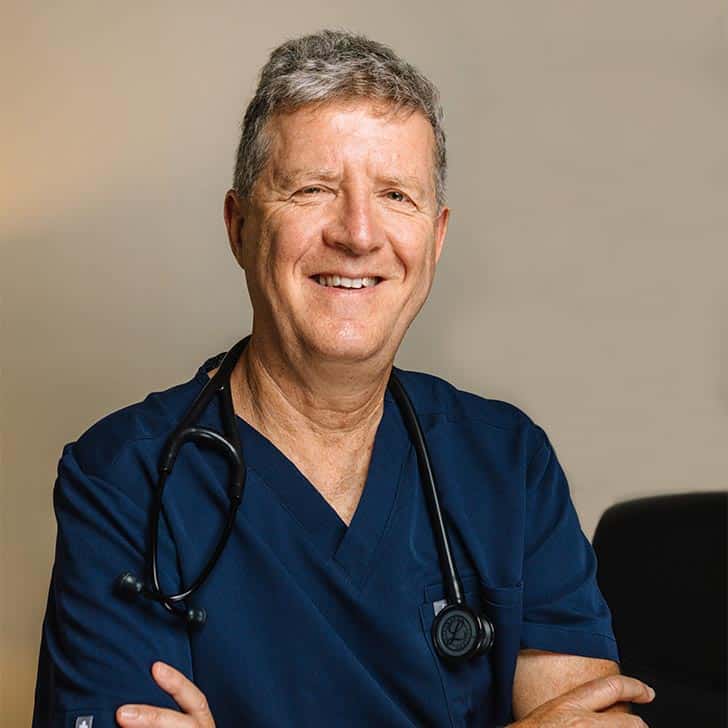
Isaac Eliaz, MD, MS, LAc has been a pioneer in the field of integrative medicine since the early 1980s, with a focus on cancer, immune health, detoxification and mind-body medicine. He is a respected formulator, clinician, researcher, author and educator, and a life-long student and practitioner of Buddhist meditation. With... Read More
- The “survival paradox protein” as a fundamental therapeutic target in health and disease
- The use of therapeutic apheresis as a powerful blood filtration treatment
- Strategies to complement and enhance regenerative medicine protocols
Related Topics
Michael Karlfeldt, ND, PhD
Dr. Eliaz, I am so excited to have you on this segment of Regenerative Medicine summit. You’re somebody that there are a number of people that I consider giants in this field and you are definitely one of them in regards to regenerative medicine and so many other areas. So thank you so much for being here.
Isaac Eliaz, MD, MS, LAc
Thank you so much for having me. I always enjoy talking to you and I learned a lot from our conversations.
Michael Karlfeldt, ND, PhD
Well thank you. So I want listeners just to understand the wealth of knowledge that you have. Dr. Isaac Eliaz is a leading expert in the field of Integrative Medicine specializing in cancer, detoxification, immunity and complex conditions. He is a respected physician researcher, bestselling author, educator and mind, body practitioner DR Elias, Partners with leading research institutes including Harvard National Institute of Health Columbia and others to co author studies on Integrative therapies for cancer have a metal toxicity and others. He is founder and medical director of a Amitabha Medical Clinic in Santa Rosa California, where he has pioneered the use of therapeutic apheresis as an adjunct blood flow filtration treatment for detox and chronic degenerative conditions. Dr. Eliaz I’m so excited because we’re going to be talking about apheresis and then also some other components that I know that you’ve written an amazing book called The Survival Paradox and we’ve been talking about the survival paradox protein, correct?
Isaac Eliaz, MD, MS, LAc
Yeah.
Michael Karlfeldt, ND, PhD
So tell me a little bit about in your book, You talk about the survival paradox protein and you’ve been studying this for decades. In fact you’re even doing a a study with with Natural Institute of Health in regards to this protein. So, tell me a little bit about this protein and how can it be? Is it good? Is it bad? What does this protein do for us?
Isaac Eliaz, MD, MS, LAc
Right. So before we dive into the protein, it’s important to understand the concept of survival paradox and survival paradox is really a new paradigm. It’s a paradigm shift from our understanding and integrative medicine. People like you and me and now in in conventional medicine because of the cytokine storm in C0V!D that inflammation really drives. And it’s it’s the fire that moves so many diseases, but inflammation is really not a cause inflammation, a clear result. So when we go deeper and we see what drives inflammation and what and and as a result drives degeneration. We find the survival paradox. And why is it a paradox? Because we are all wired and built to survive every cell in our body, every organ us as people communities, our earth etcetera. And as part of this, when we face danger, we respond immediately and automatically.
So the first level of response, if we were the sympathetic nervous system through the autonomic system because it’s autonomic, we don’t control it and the empathetic response has two basic powers. It fights, which equates to inflammation, struggle friction or it hides, it runs away, which creates to creating micro environment biofilm fibrosis where we create an environment in certain tissues. It is different from the body’s environment which is ideal for the growth of cancer of autoimmunity of metabolic diseases. So while we want to survive, the result of getting stuck in this survival response is actually inflammation, fibrosis, degeneration and shortening of our life quality and our span of life. And that’s really the paradox. So we talked about the sympathetic response which is innate but deeper than this the biochemical system react within minutes. I’ve shown in my phase one and eight grant that when we induced sepsis in animals we get collecting three spiking within minutes and only later interleukin six will come up and only later the kidney will get damaged and when we blocked collecting three with specters always modified.
Respecting we attenuated the L. C. Expire. We prevented the creatine in spite we prevented the death of the animals. So we got these certain proteins which are called alarming and the key ones have been engaging for almost 30 years and made some of the most important discoveries that blocking it with modified expecting will reduce inflammation, fibrosis and as a result so many other conditions. So this survival paradox protein. It responds with a minute and then it drives the process. So it’s really the ultimate upstream protein and the image I like to give it is the waterfall. You know we’re all trying to affect cytokines. We’re trying to put down the fire but really like putting buckets at the bottom of the waterfall and trying to catch the water much more efficient Michael to shut down the waterfall at the top. And that’s what addressing collecting three does. So if we look at the biochemistry of what happened when collecting three gets to the cell, it shifted from a normal metabolism to an emergency survival metabolism from normal mitochondrial function, for example, to glycol icis. Right? And there’s, you know, so well as being an expert in integrative oncology, the Warburg effect is the hallmark of this, of this, of this issue.
There is oxygen but the cell is in a survival mode, right? It goes to this very rapid, 100 times faster inefficient metabolism. So collecting three is like the alarm is like the bus or the train it drives to the problematic tissue and then it brings on inflammatory compound growth factors. Hyperviscosity, compound sticky molecules and it drives metastases. It drives the primary tumor. It drives auto immunity, it drives metabolic diseases. So when we understand it, we realize that collecting three per definition is antagonistic to regeneration. It drives degeneration. It drives destructive forces. Now we need to fight, but just for a few minutes and then we need to relax. It’s a little bit easier with the nervous system because we can take a deep breath going out of nature. Meditate, listen to music. We shift with the biochemistry we get stuck in the look and that’s what happens to people. And certain people have a tendency to overuse collecting three and they will have shorter lives. And certain people have much lower level of collecting three and these are the centurions. We know it’s published.
Centenarians have a much lower level of collecting three in the blood compared to people in the seventies and eighties. And when you look at the seventies eighties group, you’ll see a few that have lower levels. Well these are the ones who are going to become the centenarians. You know, so we understand it. We understand that if we can address collecting three and that’s why modifies it respecting it’s really a foundational supplements. While a lot of the work on it. As you know. Well it’s in cancer. We are just about in fact by the time this is aired we will be presenting. So I can say we presented in November in the equivalent to ask or in Europe our data in 18 months. Follow up on biochemical relapse of prostate cancer. People who responded for six months moved on. It’s a multi center trial already and they used modified it respecting 15 g a day and there was 90% benefit 90 compared to the baseline 18 months earlier where the one side effect is that people feel better. Have less. Joint fans have joint pain, have more energy memories better. So while the focus was on cancer, the whole role of collecting three in fibrosis inflammation and the understanding the collection three is the driver of inflammation.
When you look at it, you understand, wow, if we want to regenerate, first of all, we have to stop the destructive process. You really can’t have you can’t grow a plant when the fire is on, it’s gonna burn the plant. You gotta put out the fire, you got to cool the earth, only then you can nourish the earth and things will grow and that of the body functions. So in this sense, we have on the very simple level this amazing protein. And that’s why when you address it with modified respecting all other therapies are going are going to be more effective. If you look collecting three research, there are about 10,000 published papers on every disease really it’s cause there’s a big paper from 2 18 82 Z. Literally every disease. If you look at the publications on practice all about 80 publication. So many health conditions. Why? Because we are addressing an issue really at the upstream inception. So, that’s one level. And then of course it’s not a simple then we can see what can drive us to get into a survival crisis. And that’s what we’ll talk more during this interview. What gets us to not feel safe.
What gets us threatened if its toxicity. That is chemical, emotional, psychological genetic epigenetic, the environment around us, it all affects us. And that’s the beauty of it and, you know, so well being in this for so many years and and and you know, I know a little bit, the more we hold, the bigger picture, the the more we can use very simple tools to get very powerful results when you need to use a lot of tools and a lot of gadgets. There’s usually a deficiency in understanding. So collecting three offers a window into a different understanding. People who read the survival products will tell me it changed my whole perspective about my health, including many, many doctors and that’s why I always get excited talking about it. I don’t get bored, you know, I’ve done a few of these summits by now, you know.
But then in regeneration it’s very important in regeneration. It’s a key factor. So, my research with NIH actually is pulling out collecting three through therapeutical phrases is the first time there is one device in cancer that relate to TNF alpha receptors is the first time that we’re taking the phrases device and we are literally putting pulling the needle in the haystack, the whole amount that can be pulled in extreme cases. 200 micrograms. Okay, you can see it with your eye and we have shown so we’re actually studying sepsis and acute kidney injury deadly acute conditions in the intensive care unit. So first, you know, we’re in the large animal sepsis model then we’re going to move into the clinic once we get to the regular toy phase, but it’s really like pulling the needle and like the whole thing collapses, you know, and I’m so excited, you know, because you know, so many years and my my inventive creative mind just to know is it working or am I just crazy? You know? So I’ll find out, I’ll find out, hopefully we’ll find out it’s quite a journey
Michael Karlfeldt, ND, PhD
Because you’ve been working on this for decades and to be able to get to this point and do these studies with my age. I mean that is just
Isaac Eliaz, MD, MS, LAc
And with some leading amazing researchers and clinicians really top from top universities, nephrology is critical care doctors, there is an excitement because it’s amazing nothing has changed in the treatment of sepsis for like 30 years, somebody has sepsis and their kidneys get damaged 60% they’re not coming out of the ICU 66 0, you know, and what happened here, this is an extreme case. But the same thing happens on a minute microscopic homeopathic dose in inflammation. And if we can change it, the body will generally naturally regenerate.
You know, the body wants to regenerate, but it needs to be given a chance to regenerate. And if it’s always struggling if it’s always putting out fires and you know after the fire burns there is scorched earth after we get cut, there is a scar, but when the baby gets cut, there is no skull because the regeneration quality is so much stronger. They don’t have a lot of emotional psychological lifelong traumas imbalances that creates coming really melting the scars of survival, which is one of the three chapters of solutions in my book, it’s really a prerequisite to really regeneration. So we need to really create the milieu for regeneration to happen, you know with some of the tools that you use, you know what I’m talking about, sometimes we don’t detail it because of regulatory issue what you know what is behind you. But you know what I’m talking about.
Michael Karlfeldt, ND, PhD
Yeah and it’s fascinating you’re talking about the survival mechanism and the survival paradox. I mean it’s what kept us alive from the tiger eating us up. It’s what it’s and it is a very necessary hardwired component of of our existence now when we don’t have a tiger to fight and we don’t have to you know play dead, you know, we now we have the normal daily stressors but we we react in the same way, you know, we we react with that going into that inflammatory fight or flight mode and by being in that in that continual state, you know then to escalate, we have them the survival paradox protein, the galactic three, you know that’s continually being stimulating all these cells and we are continually then in that shift in that inflammatory state to promote inflammation. You know, which is when our body degenerate faster, which is the opposite of regeneration, regeneration is when we don’t have these inflammatory signals that are continually taking place. So, tell me a little bit about collecting three. I mean it’s it’s a protein and you mentioned that it’s the kind of at the top of of all the inflammatory signaling like the L six and th two and th 17 and M tour and all these different things that we look at at cancer and and probably NF kappa beta and and all these different, you know, inflammatory drivers. So how does it activate all these different things? I mean, how is it the biggest thing and how did you figure that out?
Isaac Eliaz, MD, MS, LAc
Yeah. You know, so initially my work was in cancer but I noticed that people’s blood pressure is getting better. The joints are getting better than their memories and realize, wow, it’s attenuating inflammation. You know, Michael, if you want, if you let me share, I’ll show you a quick slide that really, really reflected, you should be able to right now this current slide. So what happened you have collecting three, which is the protein and then you have this carbohydrate recognition domain with a different login that you asked are going to come and they’re going to create a Penta meal structure, see if the one becomes five and then this nasty light. So he literally get a lattice formation literally a biofilm.
You know, literally what Virginia livingstone was talking about. You know like decades ago. And of course it’s not only in a cancer cell, It creates a micro environment. And then what happens look at the logins right? So cancer logins, immune immune dis disruption ligand because it blocks the function of seeds the 45 hyper viscosity fiber connecting damage to the collagen sticky molecules, right? It creates clotting and stickiness, blood vessel growth damage to the nervous system, right? No inflammation. N. G. Two else will be one big intense er gags. So with all of these you suddenly get an an inflammatory response and this is why it’s the upstream it’s the bus you see there’s so many therapies right to address one of these components. But here you are disrupting the lattice formation, you are stopping the whole process. You know it’s so fascinating.
Michael Karlfeldt, ND, PhD
So it’s like because we have all these novel therapies, peptide stem cells and all these kind of regenerative therapies that people pay a lot of money for. But obviously like you mentioned if we haven’t stopped the fire and then by trying to throw regenerative medicine onto something that’s still burning you know there’s only so far we can go and obviously it’s and then revert back to where it was before. So the key to stop the fire to stop the inflammation to address it at the top is crucial before you start putting all these other expensive novel therapies
Isaac Eliaz, MD, MS, LAc
Yeah completely. And I don’t have the slider about our collecting three controls on one thing all the interlocking chain and the other part TGS better. But I want to show you one more slide with your permission. This talks to you a lot in cancer. So let me just share the screen with this one. So this is really you know down what we are doing. So you get you get collecting three, they’re collecting three receptors right here. Okay so collectively will destruct insulin receptors. Okay that’s why it’s so implicated in diabetes. It will downgrade P. 53 P. T. N. You get a Katie being activated on the cancer pathway. Right? But you get A M. P. K. Is a devastating one of phosphate candles being blocked because now you got em to one activated. Well guess what? The cell is a sense that there is no oxygen coming in, right? Because it’s blocked.
You get hypoxia and using factor and then you got your P. D. K. Pirated broadness, kindness that people want to know, you got your pirouette being blocked and suddenly so this is of course the Warburg effect. But that’s the abnormal metabolism and diabetes in autoimmunity in in in every chronic disease to understand we are dealing with it right here and they don’t have this specific slide. You got the macrophage turning into inflammatory macrophage because they got a signal from collecting three or because they know there is a problem and the excreting collecting three. So right here they are starting the process. So we are changing it before it comes to the sale and we shut down this whole mess and then within the cell the substances that help right? We generated medicine. So Metformin is used, bourbon is used the key natural compound intracellular liaison. Okay, all because the local for magnolia will upregulate P 53 will block A. K. T. M. To one and initiate A M. P. K. And block H. I. F. And and the and the TNF alpha and NF kappa better. And that’s why if you look we are using now a lot pectin om cp and Pinocchio altogether in people with narrow inflammation. It’s amazing the feedback like I’ve never expected why? Because we are blocking extra cellular early and we are blocking intracellular early.
So really what people have to understand is that when we shift the metabolism we are creating a generation it’s happening an abnormal cell is becoming a normal cell that’s regeneration. Now I know you know you and I like driftwood cancer, that idea of re differentiation, medicine and cancer right. Can we get the can we get the cancer to become less aggressive? Can we make it feel safer? So both by reducing this survival drive of the cancer. So we talked biochemically. But now when I work with people when I do healing it’s like what when they go into the cancer, what is not allowing the cancer to take a deep breath to feel safe. You know to feel like it has to move fast, right and people find amazing things. So everything goes and what you are, what you mentioned in your very eloquent definition, If we create the right environment, we will naturally allow regenerated medicine to work. So for example, if we talked about therapeutical phrases, why is therapeutic, afraid so dramatic? Because it’s a selective treatment you don’t remove just blood or plasma. Not plasma exchange. You remove selectively the bad lipids.
The LDL the oxidized LDL lipoprotein A which really doesn’t allow oxygen to get into the tissue by dr strokes. How this is a silent killer drives cancer. You remove the inflammatory cytokine and the positively charged toxins, heavy metals that are bound to lipids. Now, what does it do? It creates space in the place which is really inflamed. So for example, in cancer you can give great medication if there is if the area around the cancer is a very strong different micro environment with no normal circulation with a bio fin, which is really this lattice formation medicine is not going to get there right in Chinese medicine, we talk about helping blood circulate during the first two days of chemotherapy. It’s an ancient concept of the same thinking so we are exposing the cell, we’re exposing the cells to the immune system. So for example, PD L ONE inhibitors will not respond to the high levels of collecting through it’s known it’s published. So you do the apheresis, you are changing the environment of the patient. Then you give up appetites, totally different results.
And now we are talking Michael, we’re talking high tech. But let’s look at our body when we come to this world to grow the first thing we do, if we take an exhalation we let go, we detoxify and only then we can narration when we leave this world, it’s the last letting go. We do we take an exhalation. If anybody what somebody dying this profound last breath and everything changes. So we are built to detoxify our exhalation is twice as long as our inhalation, our lungs. If we paralyze the muscles will collapse, we’ll exhale. So detoxification creates space for transformation, for the change of oxygen in the capital within the lungs and for nourishment through the house. And that’s the process that happens. So when we look at regeneration, we got to look at it as a process that starts with detoxification. If anybody wants to take a deep breath, you can’t just go like this have to excel. Now it’s much easier to take their breath deep breath same concept. So understanding it suddenly makes what we do much more effective.
Michael Karlfeldt, ND, PhD
So with apheresis, I mean what does that look like for a patient? I mean what what does that kind of machine looks like? And I mean it’s something that’s easy to do.
Isaac Eliaz, MD, MS, LAc
No, not at all. And it’s really important that people who do this and do that and do every day I want. It’s like highly specialized dialysis. So it’s really special. You know it’s what I focus because of my research. I mean still do my other stuff on one on one but it’s really a specialty to do it right because it’s an expensive process because the filters are very sophisticated. You have to separate the blood from the plasma. Often you need a central line special central line unless there are good veins, you pull out the blood, use it separates the cells from the fluid from the plasma. The plasma goes through a filter and what I do from an integrated point of view, I will run very specific IV’s for the specific patient before during and after. So I create a whole process based on how much detox they can take and they also developed different frequencies that are not the conventional frequencies of how to use it. And ideally what I will do a lot is I will coordinate with other doctors when the patient comes, they get the Pharisees and then immediately they go back to get their regenerative treatment.
Of course I do some of them in the clinic like different peptides but it allows patients to really be in a much more supportive place when they come and get the for example, cancer treatments including alternative cancer treatment because there’s a greater exposure of the tumor and with its very effective with chronic infections like you know, like Lyme disease. Because my philosophy, unless it’s an acute infection, we are built to overcome infections, we just need to support the body. If we can overcome an infection by supporting the body, we really overcame the infection. If we overcome an infection by taking antibiotics, we suppress the infection. Sometimes it will kill it acutely, definitely. It hasn’t settled in but chronically it is very rare for the patient to really heal just like within cancer, right? The patient who haven’t done conventional treatments, a few of them, not a lot, they are the ones who really have the amazing miraculous healing, right? Because the body still has its full capacity. So it’s a dance between using integrative medicine together with conventional treatments and making it work better. Which is really the goal of Integrative Oncology.
It’s not about the one in a blue moon, amazing miracle everybody has this, it’s about can you help every single patient in one capacity or another? And that’s doable, right? You know, it’s so alias so experiencing this same thing with regenerative medicine and regeneration doesn’t always go in the order that we want the regeneration. Maybe emotional, maybe psychological, you know, maybe in ways that we don’t we don’t really anticipate and as part of allowing regeneration to happen is not to have a preconceived idea about what is going to happen because the moment we have preconceived ideas, we are naturally limiting our possibilities because we already decided what’s going to happen. And that’s a profound statement, not easy to digest, It’s about, it’s about like it’s almost like a surfer on a wave and you’re not like you’re at the edge and you know, you’re doing integrative oncology for many years and I’m doing it, you know, in times when there were very few of us right now, it’s very popular because so many people doing this, we were kind of alone right often.
We will talk to ourselves right once every few years. I remember there was a conference in San Diego in 92 nutrition and cancer. Patrick Quinlan was a good friend of mine, you organized a great conferences when we have dinner even 25 years later, I talked to him about it. Everybody rushed, you know, wow, we got to talk to each other actually, finally, you know, and so these were days when you kind of were in the journey, it was mysterious, it was creative and it was at the edge, It was amazing, you know, and so you want to keep this freshness because this is what regeneration is about, it’s about things being fresh.
Michael Karlfeldt, ND, PhD
And it’s important, like you’re talking about the antibiotic, you know, and where we’re suppressing the infection or do you know, some of the chemo and all of that and and it’s suppressing the disease process, but it’s inhibiting the body’s ability to develop intelligence in regards to what it’s dealing with. So for instance, like you’re saying, you know, we fight an infection and we do it ourselves. We have we overcame the infection and we overcame it because our immune system, our innate intelligence was able to recognize what was going on and then shift the body back into homo static, you know, estate, you know, to homeostasis.
And so by supporting the body with with natural things where we then, you know, remove agents that are than causing the inflammation and we are supporting the mitochondria instead of having it, you know, down regulated by things like collecting three, you know, then we are able to run at full speed and we’re able to to generate create tissue that that creates healthy joints, healthy skin, healthy hair, you know, we have in in the when we do the protein folding, you know, that requires a lot of energy and that protein folding, you know, that that is what what we need to create these perfect proteins to build tissue. And if we don’t have that energy if we have galactic there that’s done, regulates energy then they are going to be misfolded and then we’re not going to create the right right kind of cartilage, the right kind of bone, the right kind of skin tissue and then we can’t regenerate. So it becomes so important to address that. And then to have a tool like apheresis to be able to clear all that out. I mean that’s amazing.
Isaac Eliaz, MD, MS, LAc
Yeah, so that’s like more of a high tech, it’s a powerful tool. You can’t it doesn’t matter how manipulation treatments or it’s another scale, but at the same time, on a more ordinary level we have to understand we can’t regenerate if the body is very toxic and we all hear about it and I’m aware of it have done a lot of pioneering work on every metals and published because motivated perspective is a very active, very effective curator of every metals, multiple clinical data that we published in lead and mercury. But as much as I I was aware of it and mycotoxins that are getting a lot of, a lot of attention, you know, we were kind we’re all brainwashed that a little bit of pesticides is okay, you know, it’s like it’s okay, you know, you can’t avoid it, it’s everywhere and it’s really not okay, there are no health levels of glyphosate.
So one of the things in the generation, we have to address pesticides specifically because they disrupt the gut lining life, they disrupt the gut lining knows the gluten sensitivity epidemic in this country. So many patients will tell you that when they go to Europe they go to Italy. There’s no glyphosate, they can eat pasta, they can eat bread. It’s gone well, guess what? You’re not gluten sensitive. It starts with a G U. R. Glyphosate sensitive while you’re around up sensitive and all the other toxic parts in the formulation. So it’s a work that I’m doing now. And we just finished the first pilot of a clinical trial showing that we can actually reduce life as it, you know, in a in the most acceptable urine test very significantly the product life for detox. But I think it’s very important. It’s part of the same, have the same attention. So we have the biochemical level we have getting rid of of toxins. And then on a deeper level how can we use our mind resources, how can we use meditation? How can we use our regenerative organs, our nourishing organs to change our body. And then that’s where meditation and mind body medicine becomes so important especially for the regenerative process. I know from my own experience and I haven’t done it in the last 10, 11 years. One level is because they felt I got to a certain level of training and second level.
I’m too busy and I hope to get back to it that I used for 20 years. I want to go 2 to 3 months a year to the mountain and just meditate. And the specific training I had that comes from Buddhism was what we call effortless training. You don’t do anything you just let go of everything. And it would be and I would do I I admit I would do some very strong. I like to do home toxicology with blood that I mix and inject. I would do like six weeks every single day until and I would come out and I would look 10-15 years younger you know and everything which in my skin, my body, my physiology everything would change. And it was a very deep peeling off. And it brought me to the recognition of the power of healing Through meditation. Now I did it in an extreme you know 10 years of day and hours a day. I don’t expect other people to do it. It was part of my craziness but it it allowed me to refine certain meditative methods that I mentioned a little bit towards the end of the book. And really what I teach a lot in Israel but now I’m gonna teach as of next year of 2023 of D. C. Actually in the United States more. I really want to offer it because our mind really has an power to heal an infinite healing power. And this is where and the key shift is from a destructive reactive survival driven lifestyle that comes from our head from our ego from thinking from figuring from reacting to our house when we connect with our heart. And then we shift from reactivity to responsiveness.
Where we respond to stimuli with love and compassion instead of re struggle and each of us has the ability to do it. So it sounds like very esoteric words. But you know me a little bit. I always bring it back to physiology. So if we look at our body and I’m rounding up to 50 trillion cells and it’s an image I never get tired to share. When it came to my mind. We got 50 trillion cells. 50 trillion. I mean for people to get it million times 1000. Okay, billion. Okay times 1000 trillion times 50. And itself has close to one million reactions a second. So, if you and I are talking now and not falling apart, it’s not a miracle. Don’t ask me what is the miracle? And the whole system works together in harmony. That’s what we call mutual support, mutual respect. A cell note is going to be expressing itself, doing its work and then it’s going to go into apoptosis and other sales will come when the sale goes into a survival paradox and wants to survive when it’s not supposed to It creates a micro environment. It doesn’t have to listen to the body anymore. Right. And you start growing on its own. How do we call it? We call it cancer.
The more ego driven the more aggressive it is, the more aggressive the cancer that’s an example. And down to the cellular level, every cell has a membrane where he decides what’s going to come in nourishment and what is going to throw out toxins. It negotiates with interstitial space, you know. Right. We talked about it. The only organ that is different is the heart. The heart is the only organ that accepts what every other organ throughout. Right? All the venous blood from every single tissue. The art doesn’t say I’ll take from the liver, but I’m not going to take from the kidneys or brain. I really like you. But, you know, the legs. You didn’t behave today. The heart takes from everywhere. In fact for the heart to give blood, it has to take the heart has to take our difficulties, connect with the universe with the infinite healing of the universe through the lungs, with the breath the exchange goes on in the lungs and then you nourish right, detoxification to the right heart transformation with the lungs and nourishment. That’s what we talked about how we come to this world. Remember a few minutes ago. It happens every second. So we are built to take our difficult our suffering what we don’t want transform it. So it’s different than detoxification. When you detoxify you also producing toxin. When you transform toxins out of the wood, of the fire, of nourishment, much deeper quality of healing.
So physiologically we do it even if we’re not connected to it mentally emotionally psychologically. But because we have a physiological tool for regeneration and healing that has a huge electromagnetic field, electromagnetic field of the heart know this shape 100 times bigger than the brain. So it gets to every cell in our body. In fact it affects people around us up to 5-10 ft, and then in a week away it keeps going, electromagnetic field goes forever. So in this sense when we connected with our mind with certain meditations, then everything is possible because why is everything is possible? Because everything is changing. The heart always moves the moment the heart gets stuck, the moment it gets fixated, we’re dead in 60 seconds. The heart always moves the mind another way the mind always thinks, always stops and analyzes exactly the opposite and then it reacts. The heart accepts what it has gives without discrimination through the aorta And the first organ, the heart nourishes itself through the coronary artery. So it nourishes itself in order to nourish others. And as part of nourishing other and the last part to add to it is that the heart nourishes itself only after it finished its work totally selfless.
Right, It pumps the clean blood out and only then it goes to the corona artery. I often say anatomically, we could have nourished the heart to the left atrium. The blood is clean the right and calmed and it stays there during the diastolic, there’s plenty of time for blood to really get in. No, no, how does its work? And only then it nourishes itself. So when we connect to our heart helpfulness instead of mindfulness, we connect our infinite healing potential and that’s where regeneration happens because regardless of what toxins are coming to the heart, the heart can still send clean blood. But we have a lot of toxins in our body, we won’t be able to clean enough. We have a lot of toxins in the environment, we won’t get good quality air, right? So we have internal inflammation which we talked about and we have global warming which is global inflammation exactly the same. Just the skin think there is a boundary but it’s affecting us. So you can see how the increase in chronic diseases and inflammation is happening in our environment as much as in us. So for people who are oh I don’t want to put energy into the environment or what you’re actually putting energy into yourself. It’s a good thing to do from a selfish is the Dalai lama likes to say, being selfless is a very good thing from a selfish point of view. That’s what happened and that’s really the ultimate regeneration. So yeah,
Michael Karlfeldt, ND, PhD
I love how I mean when you look at you know like what you’re doing is that you look at it on a cellular level organ level and you you recognize that the way the body is structured that that it has a let’s just say it’s a higher intelligence and and it is how nature intelligently work to be able to continue to function and continue to exist, continue to regenerate. And when we operate in opposition to how we were naturally created, that is and we’re driving disease and we are then impacting everything on a cellular level physiologically when we are operating spiritually and emotionally and mentally in an opposite for who we truly are.
Isaac Eliaz, MD, MS, LAc
It’s really who we truly are and that’s why it’s so in one level, easy to get there because it’s almost too simple to really to really grasp because like you said, it’s naturally who we are. We naturally have a heart that takes difficulties and give clean blood. It’s who we are. We just have the head and the ego and toxins internally and externally. That makes us not see who we are exactly. And then the result is inflammation. The result is degeneration.
Michael Karlfeldt, ND, PhD
And when you’re talking about how in the regenerative process that we it’s not something that we can guide with our mind or or tell the body that this is what you need to do. It is something that the intelligence exists already and you have to allow that intelligence to play out and you become an observer and just kind of observing the process and by doing that you give it the MAC potential to reach that regenerative you know the peak instead of thinking that this is all I want to do. And now you’re limiting the creation, You’re limiting your body, you’re limiting all these different processes. I love that.
Isaac Eliaz, MD, MS, LAc
This is very important what you said because you describe the physiological process, but you actually describe also a meditative process because when we meditate and we have an amazing experience, we tend to hold to the experience because it’s amazing. But the moment we hold to an experience, no matter how amazing it is, we are limiting the next experience and anything that we hold to eventually gets frozen and no experience stays, everything changes. So the trick in meditation is to keep moving, keep moving to keep moving not to hold to anything. When we don’t hold to anything physiologically our blood is less sticky. We have less hyper viscosity, we have less hyper viscosity, we have less inflammation, we have less inflammation, we regenerate. And that’s why it’s the power of regeneration. It’s really infinite in what I like to say. And it’s true is not everyone will be a miracle, but anyone can be a miracle because everything is changing.
And that’s why regenerative medicine is so important. This summit is so important and the way you present it today. It’s not about a tool, it’s about an understanding, it’s about understanding and about then dropping the conceptual limitation, dropping every time when you feel that skepticism come in our minds limitation. We are limiting our healing and it’s a journey, it’s amazing. I mean, somebody who thinks you know who has created a lot of things and you spend a lot of years just letting go because when you let go, you create space and when you create space you give an opportunity for things to arise. So when you want to melt a fixation that is at the root of survival, holding to what is always changeable, we create space. The fixation becomes looser like cutting the ice into many pieces. But when we bring the warmth and the love and compassion of the heart, we’re just melting the fixation. And that’s why compassion and the wisdom of spaciousness work together to create this infinite healing potential when we can drive when we can come from this place, then less dramatic tools become more dramatic in the results. And that’s really at the essence of true regenerative medicine because we will generate every second as long as we let go good enough. If we don’t detoxify well enough. If we hold our emotions, if we hold our thoughts, if we hold our opinion, we’re limiting our regeneration renewal, rejuvenation.
Michael Karlfeldt, ND, PhD
And that’s when the breath, I mean, becomes such a powerful tool because it becomes a programming of the rest of the cells and rest. You know, if you have an expansive breath and and that create that expansion to open up for possibilities for, you know, where you don’t hold the judgment where, you know like in in Buddhism they talk about craving and grasping and and you know, we need to kind of let that go and just allow and open up and breathe.
Isaac Eliaz, MD, MS, LAc
And the breath is incredible because the mind is hard to change, but we have to breathe and the exhalation is passive. So the exhalation is the process of letting go. And then at the end of the exhalation there’s this gap between the exhalation which is passive inhalation which is active and in this gap there’s a very big place of stillness. So we use a mechanical letting go process and we let it guide our heart and mind. And that’s why the breath is such a good tool for meditation where the breath allows us not to get distracted. The exhalation and this small gap allows us to let go but not let go too long. So we don’t get caught again in the mind because the next cycle of breath is coming and that’s really what happens in life. You know, in Chinese medicine, we define longevity not by how long we live by, but how many different things we have done So in order to do something different, something new, we got to let go of something old and the breath does it, The breath excels what letting go and now there is space for something to come and that’s why the breath is so keen every tradition. But today we’re looking at from a regenerative you know based on the topic I talk about. I will shift the explanation to the topic. Yeah.
Michael Karlfeldt, ND, PhD
Yeah, yeah and getting away from that because we need what we need now when we live in this modern society where we have stimulations all over the place you know and we the body looks upon that as threats. You know whether it’s five G. E. M. F. You know you know things from CNN or whatever it is that there’s always something that that is a threat. So we we need them to be able to shift away from being in that threat state that survival mode and then and that is you know yes we can do you know modified citrus pectin, pectin sol see we can do a freezes so all these things are great to bind to the galactic three. You know that drives the inflammation.
But even before that we don’t want to create collecting three. You know I mean we want collecting three as a survival mechanism but we want them in short spurts like when you know we need to run away from the tiger. But when you see animals you know they don’t keep running after they are safe from the tiger. Now they rest you know now they heal and regenerate. Yeah but we keep on running. Well Doctor Dr. Eliaz I’m so grateful for everything that you’re doing. And this is such peaceful I mean peaceful and powerful information. And to me this is the foundation of regeneration right here and then you can build upon that. But this is a foundational piece. And so thank you so much for describing it and giving it a such a great visual for people that are watching.
Isaac Eliaz, MD, MS, LAc
Thank you. Thank you for the opportunity.
Michael Karlfeldt, ND, PhD
Thank you.
Downloads
